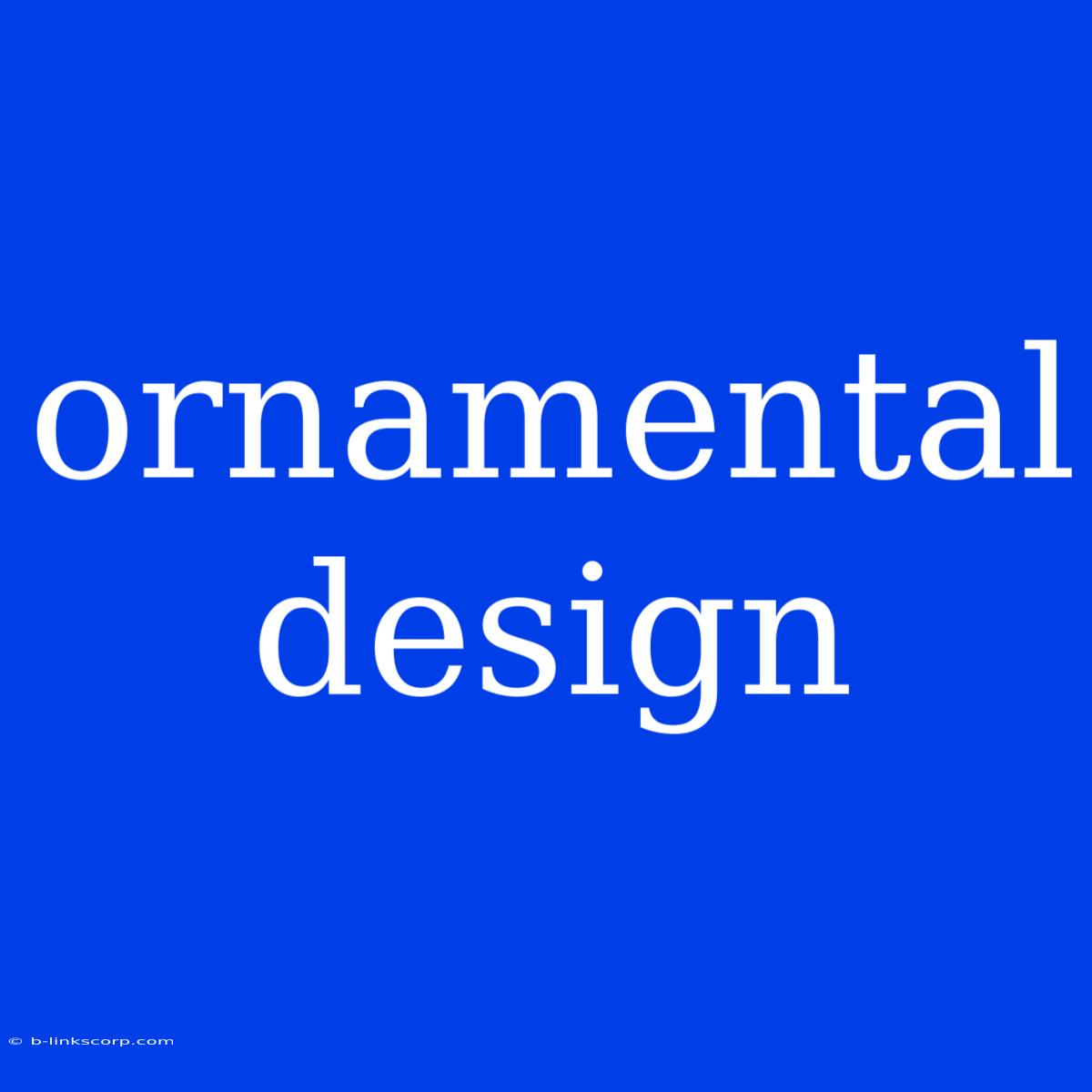The Art of Ornamentation: A Dive into Ornamental Design
Ornamental design, a timeless art form, has captivated cultures across the globe for centuries. From intricate patterns on ancient pottery to the grand flourishes of Victorian architecture, ornamentation has always been a powerful tool for conveying meaning, beauty, and cultural identity.
What is Ornamental Design?
Ornamental design refers to the decorative elements applied to objects and spaces. These elements can be purely aesthetic, adding visual appeal and richness, or they can carry symbolic meaning, expressing religious beliefs, social status, or historical events.
Here are some key characteristics of ornamental design:
- Repetition: Patterns and motifs often repeat, creating a sense of rhythm and harmony.
- Symmetry: Balancing elements on either side of a central axis creates visual order and stability.
- Geometric forms: Circles, squares, triangles, and other geometric shapes provide structure and visual interest.
- Floral and organic motifs: Leaves, flowers, and other organic forms evoke nature's beauty and evoke feelings of tranquility.
- Symbolic meaning: Many ornamental elements carry specific meanings, conveying messages about the object or its creator.
Types of Ornamental Design
Ornamental design spans a vast spectrum of styles, each with its unique characteristics and origins:
1. Geometric:
- Islamic: Intricate patterns with geometric shapes like stars, polygons, and tessellations, often found in mosques and palaces.
- Celtic: Interlacing knots, spirals, and animal motifs, representing unity and connection, commonly seen in jewelry and manuscripts.
- Art Deco: Angular geometric shapes, bold colors, and symmetry, associated with luxury and modernity in the 1920s and 1930s.
2. Floral and Organic:
- Renaissance: Elaborate floral motifs, scrolls, and human figures, embodying the revival of classical art and learning.
- Baroque: Dramatic, elaborate designs with swirling curves, ornate details, and dramatic use of light and shadow, associated with grandeur and power.
- Rococo: Whimsical, playful designs with asymmetrical curves, floral motifs, and pastel colors, expressing lightness and elegance.
3. Symbolic and Cultural:
- Egyptian: Hieroglyphics, pyramids, and animal figures, representing religious beliefs and power.
- Chinese: Dragons, phoenixes, and other mythical creatures, embodying luck, prosperity, and long life.
- African: Masks, geometric patterns, and animal figures, reflecting cultural traditions and spiritual beliefs.
The Enduring Power of Ornamentation
Ornamental design continues to thrive in contemporary art and design. Modern designers often draw inspiration from traditional styles, reinterpreting them in innovative ways.
From textiles and furniture to architecture and graphic design, ornamentation adds depth, beauty, and meaning to our surroundings. It is a testament to human creativity and our enduring desire to express ourselves through visual art.

